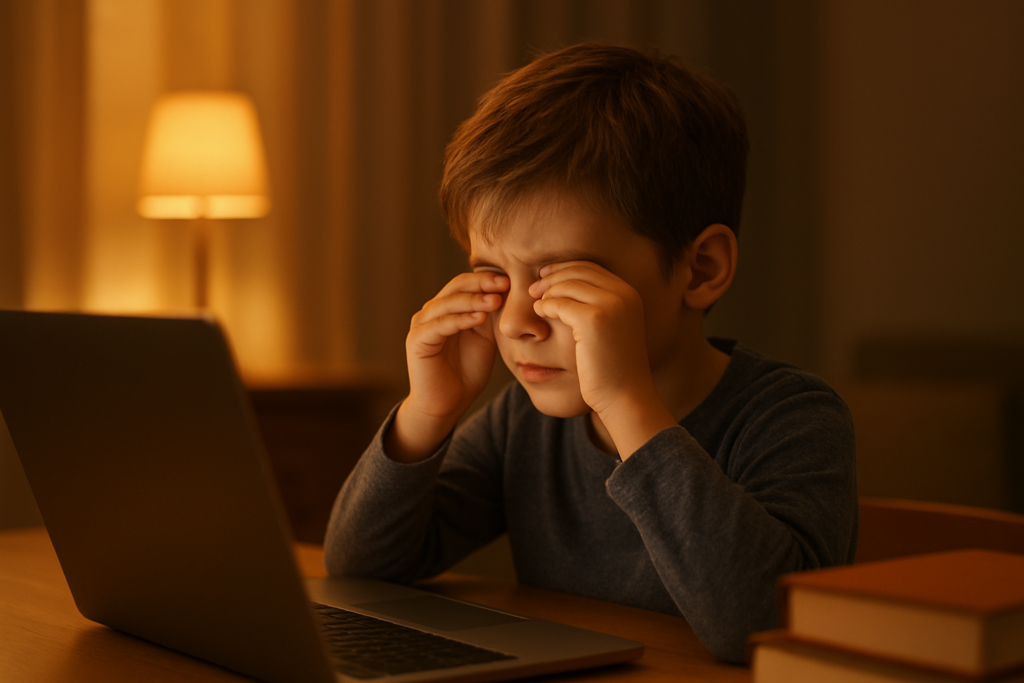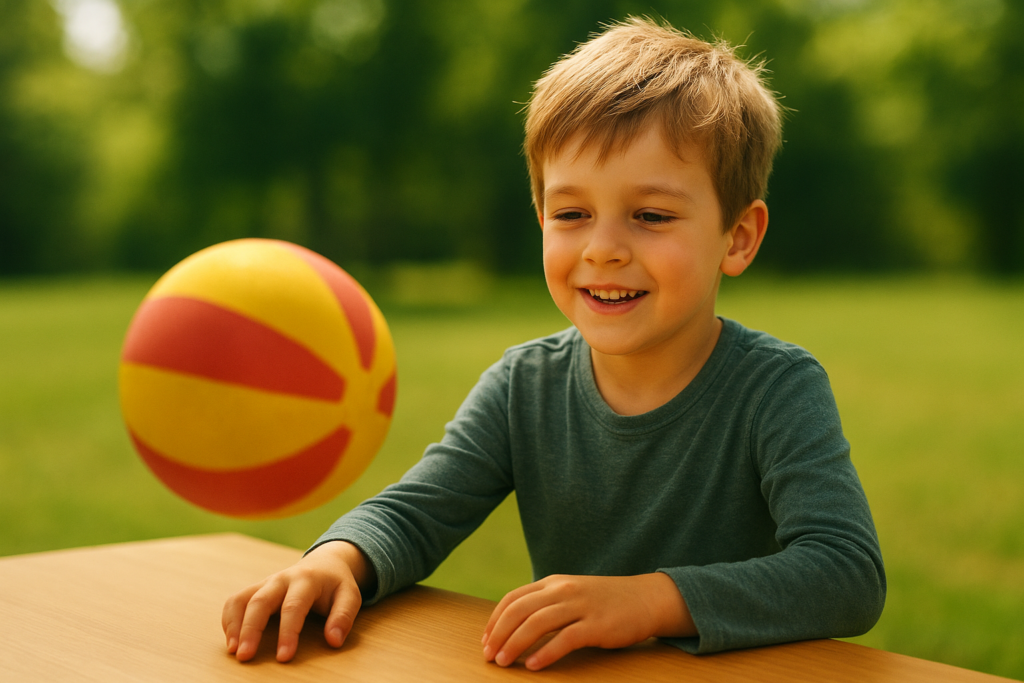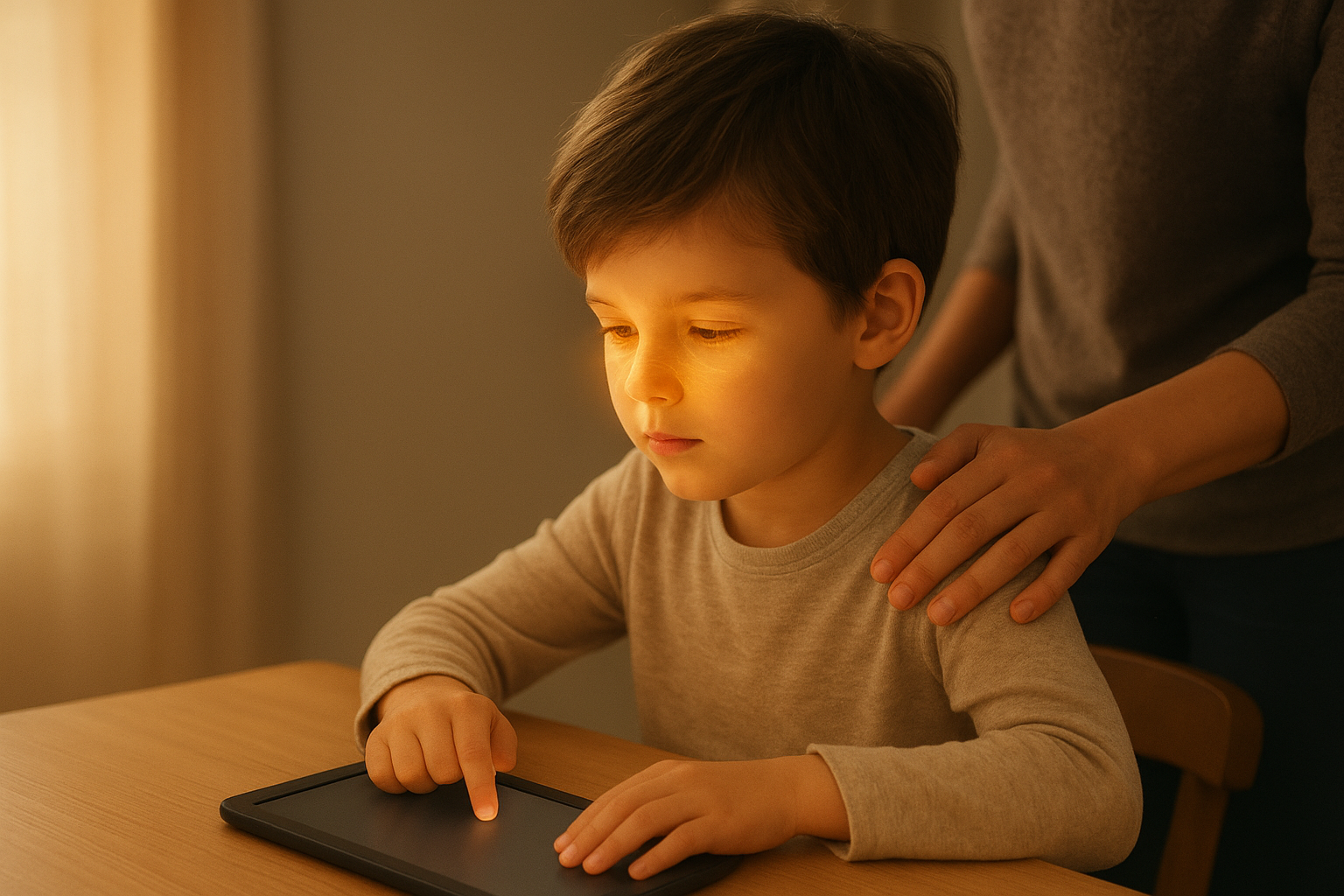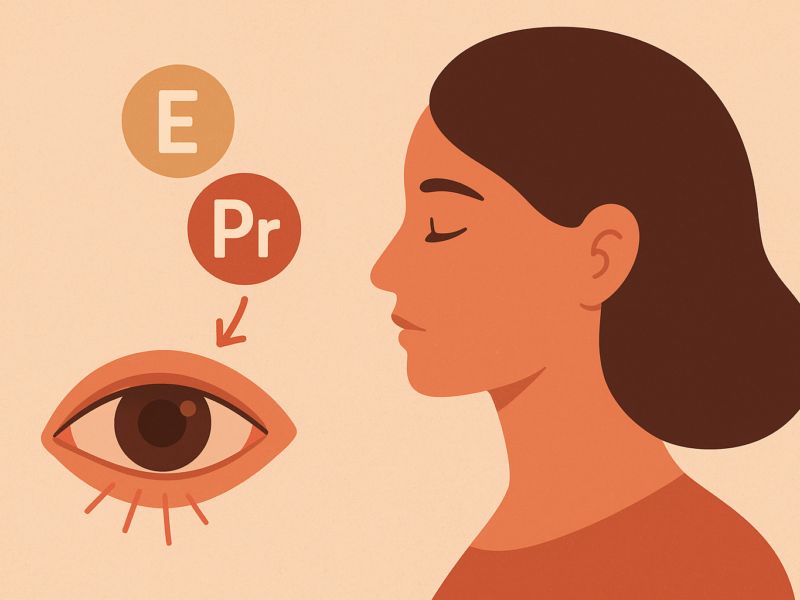Introduction
Screens are everywhere — from tablets and smartphones to laptops and smart TVs. While technology can support learning and play, excessive screen time poses a growing threat to children’s eye health. Rates of childhood myopia (nearsightedness) are rising at unprecedented levels, especially in urban areas where outdoor time is limited.
As parents, you play the most important role in balancing screen use, protecting your child’s vision, and building lifelong healthy habits. This article will guide you through practical, science-based strategies to protect kids’ eyes in the screen era.
1. The Rise of Screen Use Among Kids
- Average child spends 4–6 hours per day on screens (teens 7–9).
- Pandemic accelerated online learning and digital entertainment.
- Eye specialists report increased cases of early myopia, eye strain, and even sleep disruption linked to excessive screen use.
2. Common Eye Problems in Children Linked to Screen Overuse
- Digital eye strain: dry eyes, blurred vision, headaches.
- Myopia epidemic: lack of outdoor time + near work = stronger driver of myopia progression.
- Posture-related issues: neck and shoulder pain.
- Sleep disruption: blue light exposure interferes with melatonin.
Did you know?
By 2050, it’s projected that half the world’s population will be myopic, with onset now appearing in children as young as 5.

3. How Much Screen Time is Safe?
- AAP guidelines: no screen time under 2 years (except video chat), max 1 hour/day ages 2–5, consistent limits ages 6+.
- WHO recommendations: encourage outdoor play ≥2 hours/day to offset screen use.
- Focus is not just quantity, but quality of screen time (educational vs passive scrolling).
4. Practical Rules for Parents
The 20-20-20 Rule for Kids
Every 20 minutes of screen use → look at something 20 feet away for 20 seconds.
Encourage Blinking Breaks
Kids blink 60% less on screens.
Outdoor Play
Natural daylight helps regulate circadian rhythm and slows myopia progression.
Proper Lighting & Posture
- Screens at eye level or slightly below.
- Avoid screen use in complete darkness.
Blue Light Management
- Night shift mode in evenings.
- Blue-light glasses optional, focus on behavior first.

5. Building Healthy Habits Step by Step
- Family screen rules (tech-free dinner, no screens 1h before bed).
- Lead by example (parents model good habits).
- Use parental controls mindfully, but focus on teaching self-regulation.
Did you know?
Children who spend at least 2 hours outdoors daily have up to 50% lower risk of developing high myopia compared to peers.
6. When to See an Eye Doctor
- First eye exam at 6 months, then at age 3, before school, and every 1–2 years after.
- Warning signs: sitting too close to TV, squinting, frequent eye rubbing, headaches.
- Early detection = better treatment for conditions like amblyopia, strabismus, and refractive errors.
7. Long-Term Vision Protection
- Balance digital learning with real-world play.
- Encourage hobbies that don’t involve screens (sports, art, reading print books).
- Maintain overall health: nutrition (vitamin A, lutein, omega-3), hydration, and sleep.
FAQ Section
Q1: How much outdoor time do kids need for healthy eyes?
At least 2 hours/day in natural daylight helps prevent myopia progression.
Q2: Do blue-light glasses work for children?
They can help with comfort, but healthy habits (screen breaks, lighting, outdoor play) are more effective.
Q3: Should I worry if my child holds a phone too close?
Yes — it may be a sign of myopia. Book an eye exam.
Q4: Can tablets cause permanent eye damage?
No permanent damage, but overuse can accelerate myopia and cause strain.
Q5: At what age should a child first see an eye doctor?
First at 6 months, then age 3, before school, and every 1–2 years thereafter.
Conclusion
Technology is not the enemy — imbalance is. By setting healthy rules, encouraging outdoor play, and scheduling regular eye exams, parents can protect children’s eyes in the digital era. These small, consistent habits shape not just vision health, but also overall well-being and academic success.
Your child’s eyes are built to last a lifetime — let’s protect them from day one.



